#artist is ozias leduc
Explore tagged Tumblr posts
Text
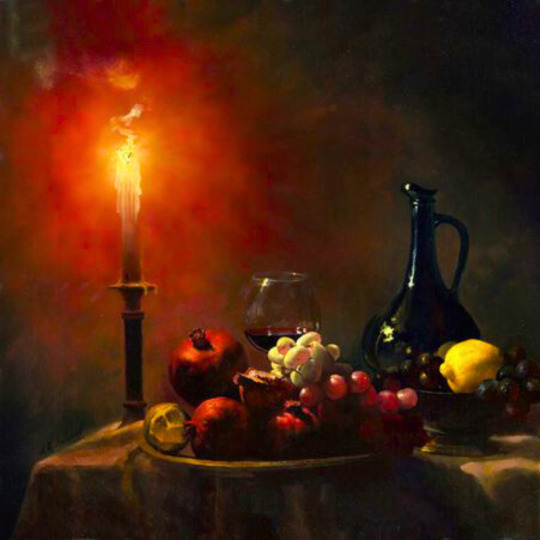
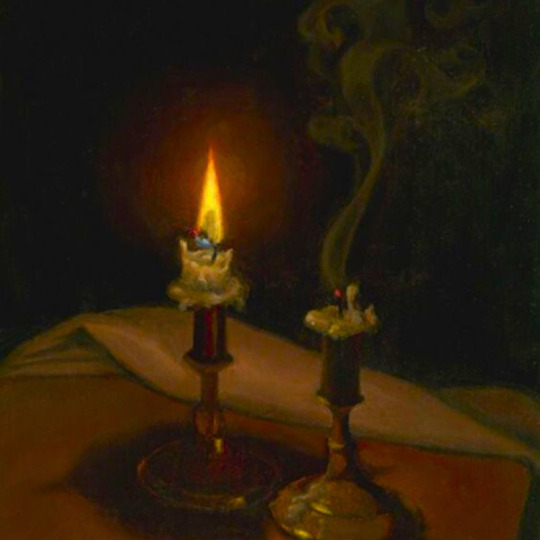

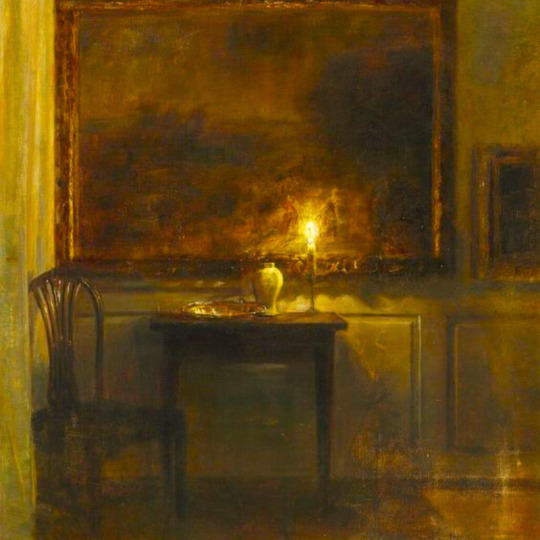



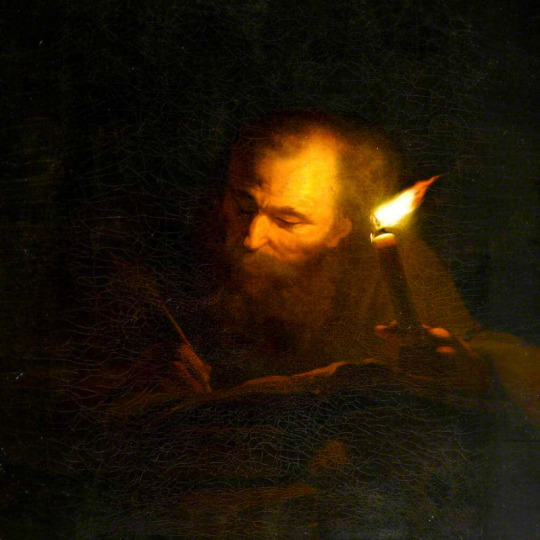
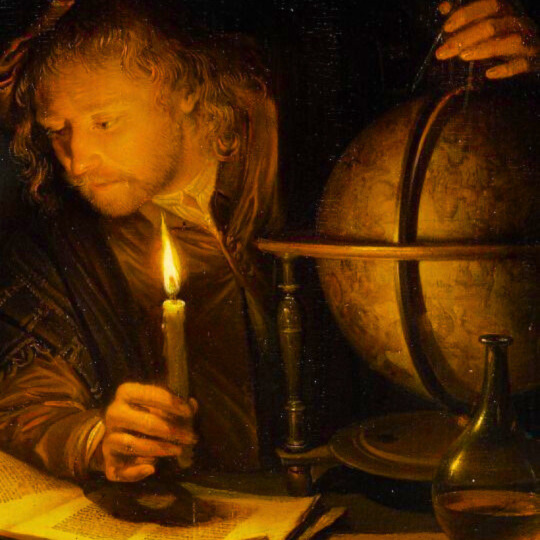
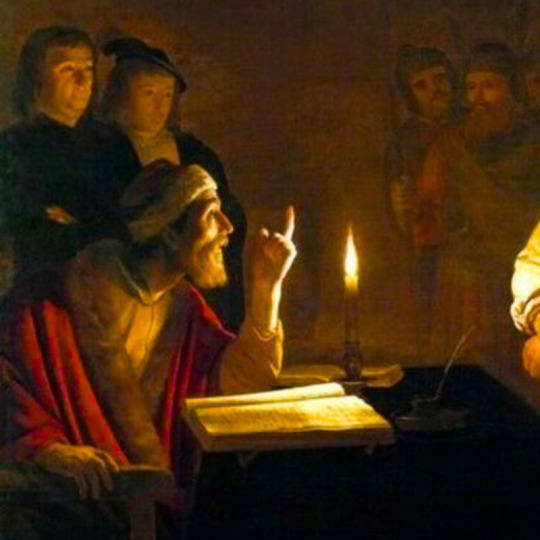
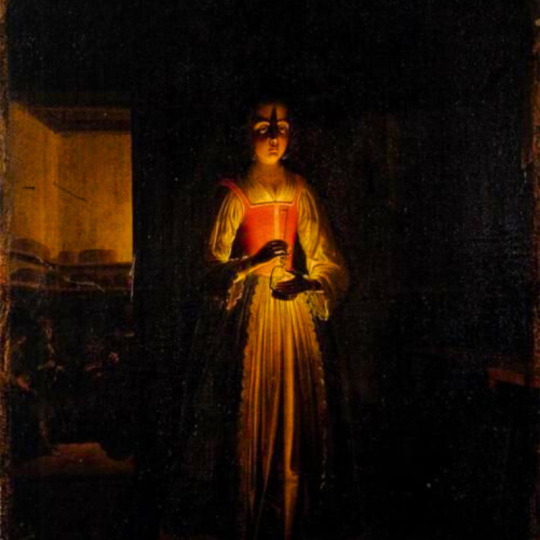

symbols in art: candles
#artist is alexei antonov#artist is virgil elliot#artist is gerard dou#artist is carl vilhelm holsoe#artist is carl vilhelm holsoe-#artist is ozias leduc#artist is michiel versteegh#artist is godfried shalcken#artist is gerrit dou#artist is gerrit honthorst repro#artist is heimbach wolfgang#-artist is gerrit dou#art history#art
468 notes
·
View notes
Text

Today we commemorate a very beloved Saint of ours, Euphrosynos!! Please take a minute to read this awesome account and true miracle about him from the Synaxarion:
Saint Euphrosynos was a simple-minded peasant who took refuge in a monastery where he was put to work in the kitchen as a scullion doing the most thankless tasks. He became the laughing-stock of everyone but bore all with unshakable generosity of spirit.
There was a godly priest in the monastery who fervently desired that the Savior reveal to him the good things He has in store for those who love Him. One night as he slept, he had the sense of being carried to paradise into a garden full of unutterable delights. Euphrosynos was in the middle of the garden tasting of the good things there and rejoicing with the angels. The priest went up to him and asked where they were. Euphrosynos answered, “This is the dwelling-place of God‘s elect that you have long to see for so many years and I am here because, in His good pleasure, God has forgiven my sins.“ Gazing upon the unutterable good things that “Eye has not seen nor ear heard, neither have entered into the heart of man (1 Cor. 2:9),” The priest observed that they were to some extent, perceptible to those who dwelt there, so he asked Euphrosynos if he might take some of the fruit of the garden away with him. Whereupon Euphrosynos took three apples and put them in the priest’s cloak. Just then he was woken up by the sound of the call to Matins. As he came to himself from what he thought it was a dream, he was amazed to find three apples in his cloak giving off the scent of an unearthly sweetness. He saw Euphrosynos in his usual place in the church and went up to him, begging him to tell him where he had been during the night that had just passed. “Forgive me, Father,” he answered, “but I have been here all the time.“But as the devout priest pressed him earnestly not to conceal the blessings of God, the humble Euphrosynos at last said, “It is true, Father, that I was in the garden where you saw the good things God has in store for his elect and that it was the Lord’s wish to show you this mystery through my unworthiness.“ It was not long before the priest told everyone what he had witnessed and showed the apples by way of proof. The monks were encouraged through this sign to follow all the more zealously the path of virtue, and those who taste the apples were healed of all kinds of disease. As for the blessed Euphrosynos, he fled from the monestery, for there was nothing he feared more than the praise of men.
youtube

Three Apples
Ozias Leduc
oil on strong cardboard, 1887
#Ozias Leduc#art#artist#painter#painting#still life painting#still life#Three Apples#oil on strong cardboard#1887#orthodoxchurch#orthodoxchristianity#orthodoxchristian#orthodox#saint#Euphrosynos#dark#night#chant#gregor palamas
15 notes
·
View notes
Photo

Gilded Snow - Ozias Leduc, 1916.
Canadian ,1864-1955
Oil on canvas
516 notes
·
View notes
Text
L’heure mauve

Nicolas Party, Ozias Leduc, Otto Dix, Fantin-Latour et bien d’autres étaient au rendez-vous dans L’Heure Mauve, une explosions aux couleurs vibrantes et éclatantes. Au cœur de l’exposition résidait un travail de collaboration : des portraits et paysages en pastel de Party, des œuvres classiques de la collection du Musée des Beaux-Arts de Montréal et des mélodies de l’auteur-compositeur-interprète québécois Pierre Lapointe, la recette miracle pour un réel spectacle audiovisuel.

On remarque immédiatement, en regardant les peintures de M. Party, la prédominance des pastels, un médium qui le place en parenté avec une tradition vénitienne du 18e siècle dans laquelle les femmes artistes ont joué un rôle de premier plan. L’artiste expliquera son amour pour le pastel : « C'était intuitif. Je suis tombé amoureux de ce médium. Vous travaillez avec vos mains. C'est très sensuel et très fragile. Les couleurs sont vives. Et c'est rapide. Contrairement aux huiles, il n'y a pas de processus de séchage. » (The Montreal Gazette) D’ailleurs, certaines oeuvres, comme celle ci-dessus, émane du féminisme de Party.
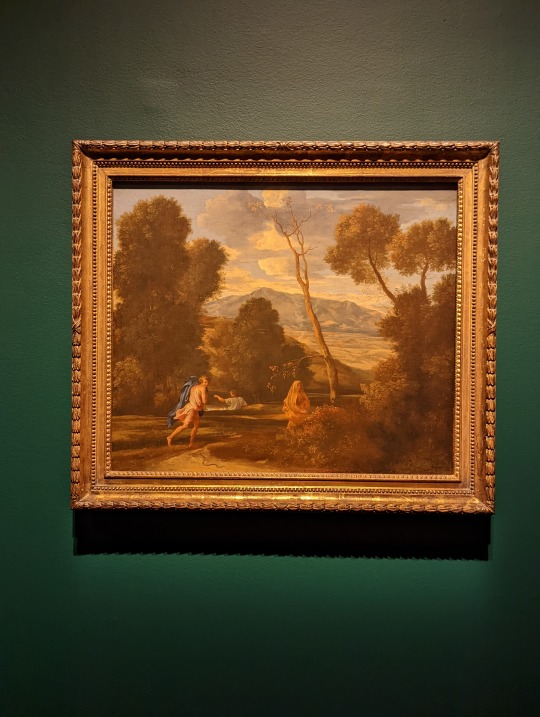

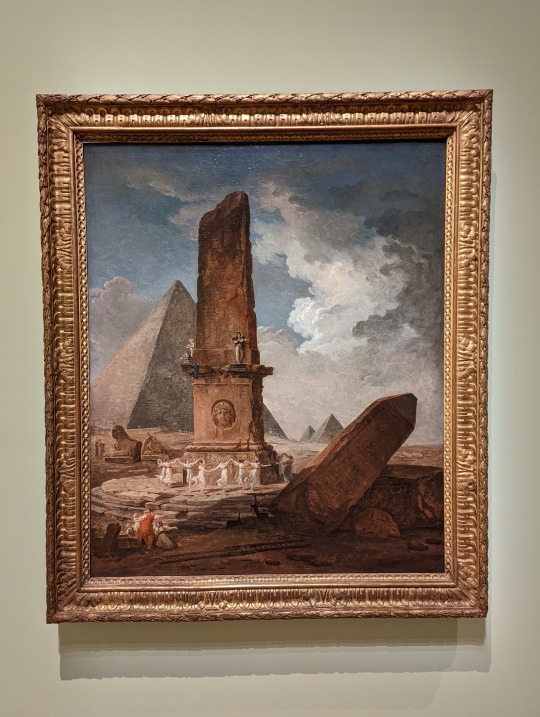
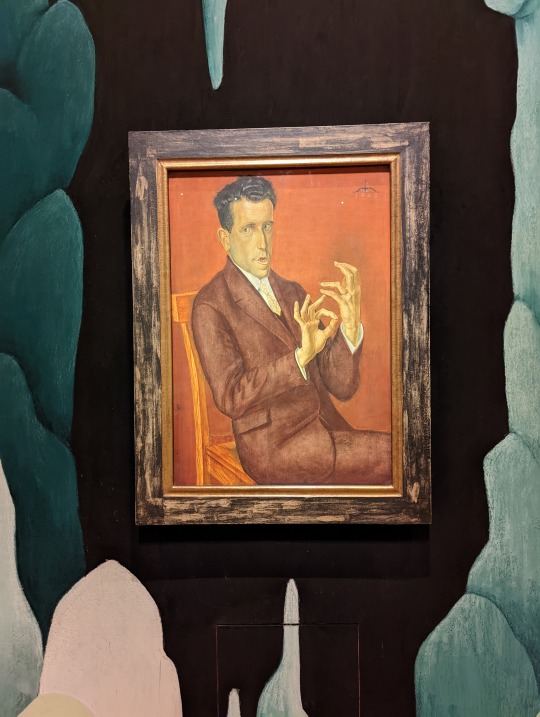
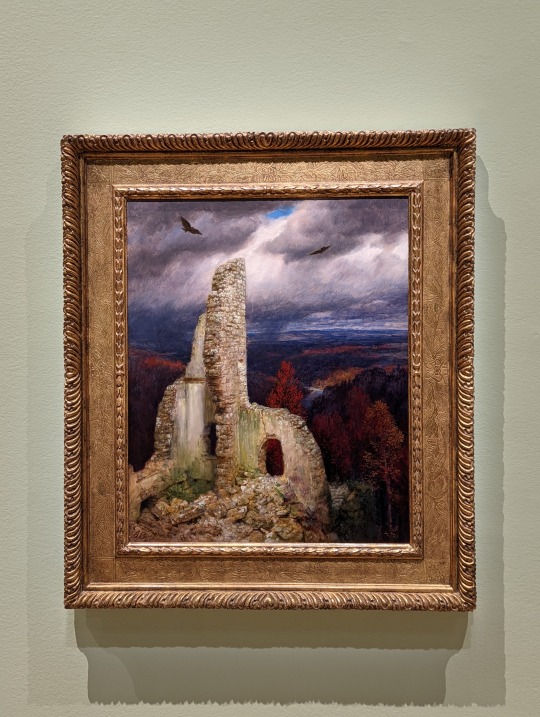
L'ensemble des aquarelles, des pastels et des sculptures de Party illustrent les liens qui unissent humain et écologie, homme et nature. Force est de constater que l’album accompagnant l’exposition explicite le narratif écologique voulu de l’Heure Mauve, tout en faisant résonner la beauté des œuvres présentées. Certaines oeuvres vont même soulever le sentiment d’impuissance intrinsèque à l’écoanxiété. Les paysages, portraits et natures mortes, à la fois grandioses et subtils, sont intégrés à des peintures murales temporaires réalisées aux pastels à l'huile; les galeries du musée devenant alors la toile sur laquelle l’artiste exprime son imagination poétique. La méditation à la fois festive et solennelle sur la nature et l’écologie devient alors un acte politique, dans lequel Party requestionne et repousse les limites de l’art en faisant du musée son canevas.
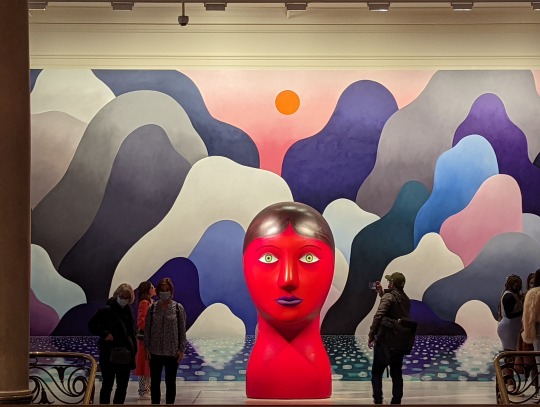
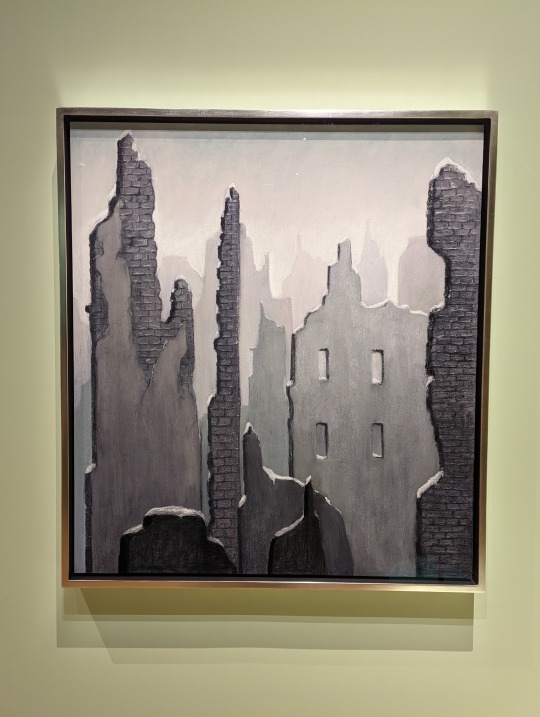
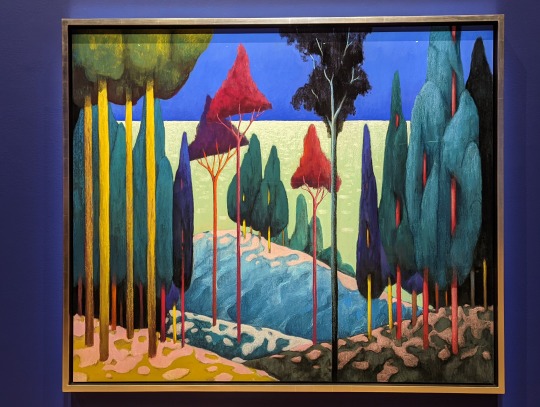

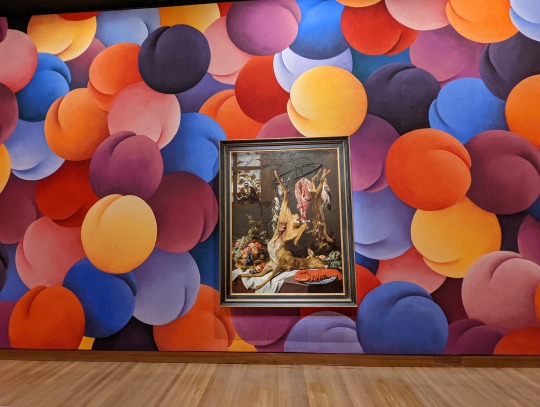

En empruntant des oeuvres de la collection du musée, Party les recontextualisent; les œuvres et le cadre de cette exposition à grande échelle tissent ensemble une histoire touchante et pleine d'espoir sur le sort du monde naturel.

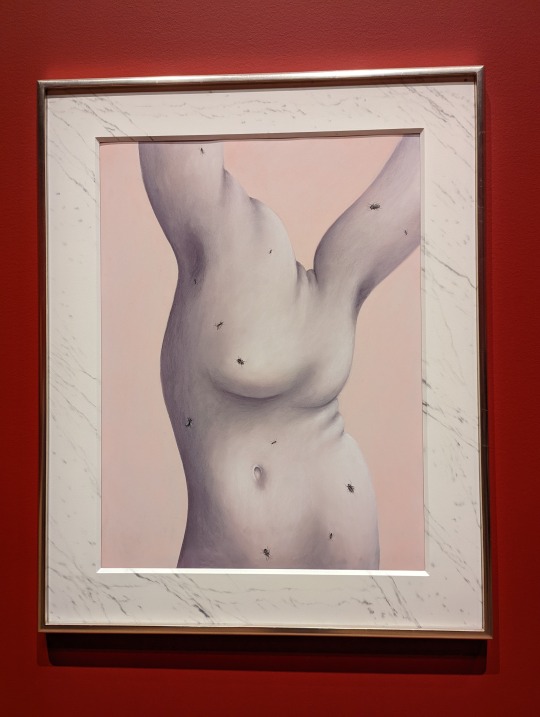


La tendance de Party à utiliser des couleurs saturées, oscillant entre le chaud et le froid, des figures et des murales surréalistes - peintes avec minutie - offre aux visiteurs une atmosphère halucinatoire et une visite que beaucoup n'oublieront pas de sitôt.
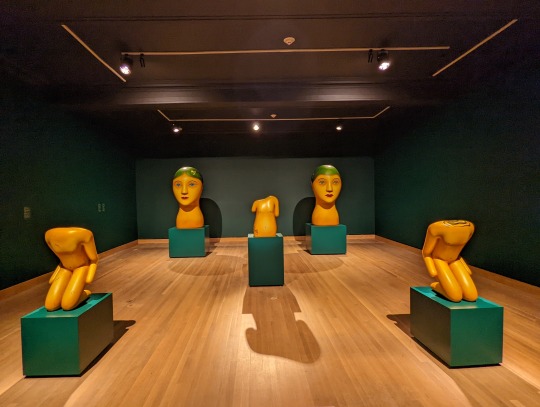
0 notes
Text
Antigonish cathedreal restores art of 'Canada's Michelangelo'
Ozias Leduc been called the Michelangelo of Canada, and an example of his work is on display at a cathedral here in the Maritimes.
The problem is, much of it has been painted over -- for decades – and that’s why few people know about his work in Antigonish, N.S.
But a restoration team is working to bring the art back to light at Saint Ninian Cathedral Church, and things are looking up.
If you visit the cathedral this summer, it’s surprisingly messy.
Large sections of the walls are peeling, but in the mess are what some call “The Floating Saints.”
“Right now as you look down the walls, they are just these pop-out images that have no sense of space and you have no sense of scale of them either,” says fine art conservator Michelle Gallinger.
The inside of the cathedral, including these figures, was painted in 1902.
Over the years, the artwork was changed significantly, and the background around each saint was painted over.
The restoration team is slowly working its way through seven layers of overpaint, and two layers of plaster, to bring the saints back to glory.
The difference is remarkable.
It costs about $30,000 to restore each of the figures and there are 14 in all.
The church is fundraising and receiving donations, but it’s a race against time.
“The paintings deteriorate with the humidity and the temperatures. And the longer we wait, the more difficult and more time consuming it will be to restore them,” said Ernst Schuegraf of the cathedral’s art restoration committee.
The original artist, Ozias Leduc, was recently named a national historic person.
Gallinger says he’s considered an incredible artist in Quebec, and it’s frustrating to see how his work was treated.
“He's finally being recognized by the rest of Canada as being our preeminent church painter,” Gallinger says. “He is our Michelangelo of Canada.”
Gallinger says they'll have two more of the saints, and part of a third, restored by the middle of September. They'll take a break over the winter, and be back on the job next year.
With files from CTV Atlantic’s Dan MacIntosh.
from CTV News - Atlantic https://ift.tt/2n6Um1c
0 notes
Photo
Ozias Leduc (1864-1955) Canadian artist

44 notes
·
View notes
Text
Le Jeune Élève d’Ozias Leduc, 1894 (Musée des beaux-arts du Canada)
Chasse aux canards par un matin brumeux (Hunting for Ducks on a Foggy Morning), Ozias Leduc (Galerie Michel Bigué)
I added a paragraph my last post, after it was published. By and large, posts are not read twice. I am therefore publishing what you haven’t read.
One paragraph in Wiki2.org’s entry entitled Official Language Act (Quebec) seems reassuring. Quebec’s Language Laws, Bills 22 and 101, do not take rights away from English-speaking Canadians. Their children may attend an English language school. But the children of immigrants, are required to attend a French-language school. All signs, such as traffic signs, must be predominantly if not entirely in French. I remember mentioning in a post that a Quebec restaurant or café owner was required to remove WC from the door to a public toilet room. WC (water closet) may be used in France, but not in Quebec. Stop signs are called arrêts in Quebec. In short, Quebec insists on looking French. Traffic monitors and advertising displays are in French.
Concerning ‘unilingualism’ in Quebec, it is useful to read the entries entitled Official Language Act (Quebec) (Bill 22) and Charter of the French Language wiki2.org.
I did not quote the introductory paragraph but quoted the next paragaph.
That English was an official language in Quebec as well, was declared on July 19, 1974, by McGill University law faculty’s most expert counsellors, disputing Bill 22. The testifiers were Dean Frank R. Scott, John Peters Humphrey, chief planner of the United Nations’ Declaration of Human Rights, Irwin Cotler and four additional legal teachers:
Section 1, which provides that French is ‘the official language of the province of Quebec,’ is misleading in that it suggests that English is not also an official language in Quebec, which it is by virtue of Section 133 of the BNA Act and the federal Official Languages Act. … No legislation in the National Assembly proclaiming French the sole official language in the province can affect these bilingual areas protected by the BNA Act.
(See Official Language Act [Quebec], Wiki2.org.)
Although this paragraph is reassuring, to my knowledge, when Premier Bourassa said that the province of Quebec would be unilingual (French), he meant ‘officially’ unilingual. Given that Canada’s official languages are French and English, why would Premier Bourassa have said that Quebec would, henceforth, be a unilingual province, officially?
In other words, the rights of English-speaking Canadians are respected under the Official Languages Act of 1969, as per the paragraph quoted. One difficulty arises for Quebecers. After the age of 11, children are unlikely to acquire native fluency in a second language, there are exceptions. Some individuals speak eighteen languages by the age of 18. They may make mistakes and they may have an accent. However, a large number of French-speaking Quebecers find ways of teaching English to their children. It is a North-American reality.
I have two students who mastered French. My star student is Gillian Pink, from Antigonish and Oxford University.
Candlelight Study, Ozias Leduc, 1893 (Google)
Language Bills, Referendums and Sovereignty
Let us return to Bill 22 and Bill 101. I have noted that there was an exodus from Quebec when Bill 22 was passed. In my opinion, Bill 22 was seen as a step in the direction of sovereignty. So have Bill 101 and the two referendums (1980 and 1995).
Quebec’s new Premier, François Legault, has stated that there would not be another referendum, but he and members of Coalition Avenir Quebec will be seeking greater autonomy for Quebec. Quebec Premier René Lévesque did not sign the Constitution Act of 1982, and that none of his successors have done so. The fact remains that I’ve been in the midst of an identity crisis for sixteen years.
My Quebec Health Insurance Card does not cover the cost of appointments with a doctor in provinces other than Canada. Yet, I am a French-speaking Canadian living in Québec, whose mother tongue is French, and who loves French literature.
I believe that all Canadians are protected under the Canadian Charter of Rights and Freedoms, but the Constitution Act of 1982 enshrines the Canadian Charter of Rights and Freedoms. It is entrenched in the Constitution Act of 1982, which Quebec has not signed. Usually, Ottawa, the federal government, rescues Quebecers. It may have found a niche for the Canadian Charter of Rights and Freedoms, or the Charter may exist separately.
However, the Canadian Charter of Rights and Freedoms requires all provinces to provide primary and secondary education to their official-language minorities at public expense.
(See French Language in Canada, Wiki2.org.)
Conclusion
Would that Quebecers had not elected a party favouring greater autonomy for Quebec. Quebecers have to protect their language, but greater autonomy for Quebec suggests distancing Quebec from other Canadian provinces.
May all Canadians live in peace and harmony. Culturally, I am French. But home is also Antigonish, Nova Scotia, where I owned a lovely blue house, across the street from the campus of St Francis Xavier University and St Ninian’s Cathedral.
Ozias Leduc
Ozias Leduc (8 October 1864 – 16 June 1955) is my featured artist. His subject matter is often religious. But his art is nevertheless diverse and still lifes seem a favourite subject. The notorious Paul-Émile Borduas was one of his students. I am embedding a video. It is a French-language video with a lyrical ambiance. A couple is getting on a raft that will take them to Ozias Leduc’s house. It may be the smaller house.
Ozias Leduc’s house (Google)
Ozias Leduc’s house (Google)
youtube
St Ninians’ Cathedral, Antigonish, Nova Scotia
Closer to me, is St Ninian’s Cathedral, in Antigonish. Paintings in our Cathedral were the work of Ozias Leduc. I was in Antigonish when they were restored.
https://vimeo.com/270158117
Antigonish, Nova Scotia
Leduc’s Boy with Bread, 1892-99, National Gallery of Canada. (Wiki2.org.)
© Micheline Walker 10 October 2018 WordPress
Quebec’s Elections and Notes on Ozias Leduc I added a paragraph my last post, after it was published. By and large, posts are not read twice.
#Bill 22 & Bill 101#Coalition avenir Québec#François Legault#Ozias Leduc#St Ninian&039;s Cathedral#the Canadian Charter of Rights and Freedom
0 notes
Photo










VALERIE BLASS
Née à Chambly (Québec), Valérie Blass détient un baccalauréat et une maîtrise en arts visuels et médiatiques de l’Université du Québec à Montréal. Dans son travail artistique, associée principalement à la sculpture, Blass explore divers territoires qui l’amènent à juxtaposer des formes animales, humaines et inanimées qui ont pour effet de créer d’étranges objets hybrides. Souvent, avec humour, ses sculptures combinent abstraction et figuration. Son utilisation de matériaux, tant nobles que triviaux, et sa façon de les associer ne sont pas sans créer de l’étonnement de la part des spectateurs. En vue de produire des sculptures complexes et énigmatiques, elle modifie des techniques associées à ce médium, telles que le moulage, le modelage, l’assemblage et le bricolage. Depuis la fin des années 1990, Blass a exposé ses œuvres dans divers lieux au Québec, au Canada et à l’étranger. Parmi ses expositions solos, mentionnons Le regard des animaux, présentée à Dare-Dare (2001), Valérie Blass, au Musée d’art contemporain de Montréal (2012), et Théâtre d’objets, à Parisian Laundry, en 2014. L’artiste a également participé à de nombreuses expositions collectives. Parmi celles-ci, il y a, en 2008, la première Triennale du Musée d’art contemporain de Montréal et Chimères/Shimmers, présentée en 2011, au Musée national des beaux-arts du Québec. À l’international, Blass a participé, en 2014, à l’exposition Oh Canada – Contemporary Art from North America au Massachusetts Museum of Contemporary Art. En Allemagne, elle a également participé à l’exposition Traces of Life de Berlin (2013). La même année, son travail était présenté à la Biennale d’Istanbul et à l’Art Gallery of Alberta. Ses œuvres font partie de plusieurs collections corporatives et privées à travers le Canada, les États-Unis et l’Europe. Valérie Blass a, jusqu’à ce jour, remporté plusieurs récompenses, dont le Prix Louis-Comtois de la Ville de Montréal (2010), le Prix Victor-Martyn-Lynch-Staunton (2012) ainsi que le Prix Ozias-Leduc (2016). - https://dictionnaire.espaceartactuel.com/artistes/blass-valerie-1967/
https://thewalrus.ca/valerie-blass/ https://www.artoronto.ca/?p=28028 http://zeke.com/tag/valerie-blass/ http://cuisineetc.wordpress.com/ https://artcontemporainquebec.wordpress.com/tag/valerie-blass/ http://badatsports.com/2009/the-last-of-next/valerie-blass-at-parisian-laundry-montreal/ http://ca.blouinartinfo.com/news/story/986124/valerie-blass-fills-the-hole-in-nyc https://canadianart.ca/must-sees/valerie-blass/ https://lecart.org/blass_03_13.asp
0 notes
Text
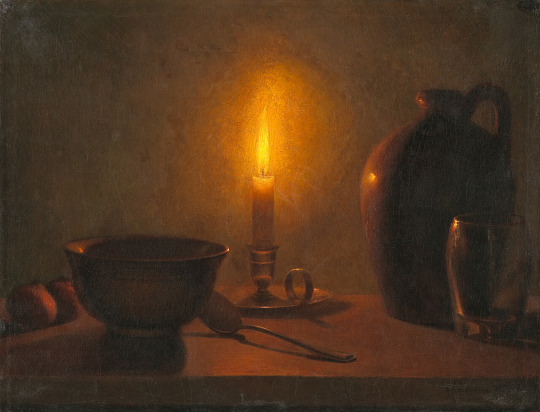
Still Life, Study by Candlelight
Ozias Leduc
oil on canvas, 1893
#Ozias Leduc#art#artist#painter#painting#still life#Still Life Study by Candlelight#oil on canvas#1893
170 notes
·
View notes
Text

Study for Erato (Sleeping Muse)
Ozias Leduc
Charcoal on canvas
25 notes
·
View notes
Text
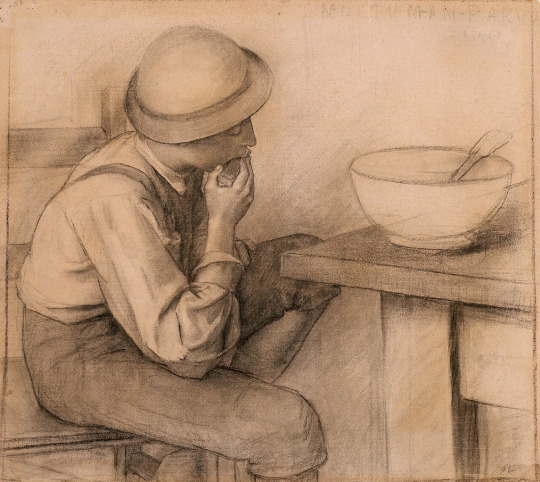
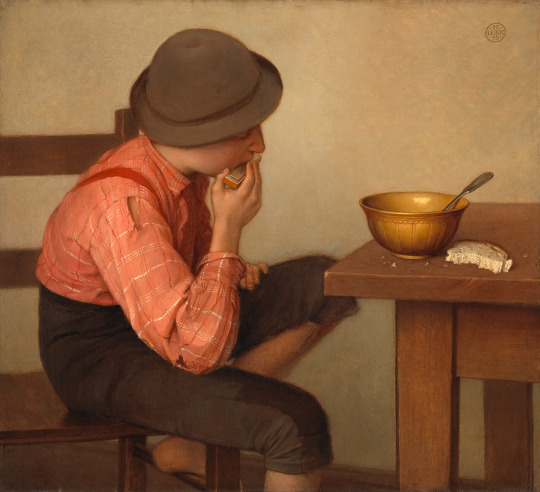
Art by Ozias Leduc-
Study for Boy with Bread
charcoal over graphite on buff laid paper, 1892
*
Boy with Bread
oil on canvas, 1892–99
#Ozias Leduc#art#artist#Study for Boy with Bread#charcoal over graphite on buff laid paper#1892#Boy with Bread#painting#oil on canvas#1892–99
22 notes
·
View notes
Photo

Gray Effect , Snow - Ozias Leduc, 1914.
Canadian ,1864-1955
Oil on canvas, 47.2 x 36.6 cm.
96 notes
·
View notes
Photo

The Mauve Hour - Ozias Leduc, 1921.
Canadian ,1864-1955
oil on paper, mounted on canvas , 92.4 x 76.8 cm
67 notes
·
View notes
Text

Three Apples
Ozias Leduc
oil on strong cardboard, 1887
#Ozias Leduc#art#artist#painter#painting#still life painting#still life#Three Apples#oil on strong cardboard#1887
15 notes
·
View notes